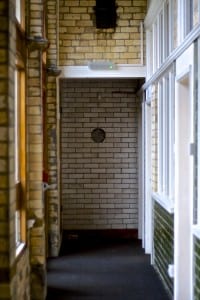“In a dérive one or more persons during a certain period drop their relations, their work and leisure activities, and all their other usual motives for movement and action, and let themselves be drawn by the attractions of the terrain and the encounters they find there.” (Debord, 1958)
Researching drifting opens up new paths for a performance, drifting suggests ways in which we can experience a site and begin to understand the various ‘little gems’ hidden throughout the landscape. I use the word ‘path’ because the step of drifting I would like to focus on most is the very first step of drifting in the ‘Handbook of drifting’ “the derive lops off the last three and short-circuits flux straight back into separation.” (Smith, 2010) The ‘Derive’ is what I would like to particularly focus on in this post as it is the one word I could not understand without research and really exploring its meaning.
First I’d like to begin with explaining the ‘Derive’ using my own definition in the Mythogeography text it talks of the Derive interrupting a rite of passage and then goes on about separation and integration and creates a very complex sentence without any example and so I shall use an example. Take a rite of passage such as Baptism, firstly the person must purge all other faiths and beliefs (Separation), secondly said person must then question whether they are willing to accept the beliefs of Christianity (Flux in Liminal Space), Finally the person undergoes the ceremony and accepts everything to be thrust back into that community (Re-intergration). The purpose of the ‘Derive’ is disruption, to allow for the purge but prevent re-intergration, to leave you in a constant flux leading back into separation, the place you were with no sort out end, ‘An A with no B’.
It is with a sense of security and an unawareness of boundaries that you achieve understanding drifting and in particular walking without knowing where you’re going. In a twist, it would seem that the Derive has a deeper understanding with life itself, we never know where our B is until we get there. Site Specific just seems to use this to realise life as a performance.
References:
Debord, G. (1958). Theory of the Derive (Debord). [online] Available at: http://www.bopsecrets.org/SI/2.derive.html [Accessed: 12 Feb 2014].
Smith. P. (2010). The Handbook Of Drifiting. Mythogeography : A Guide To Walking Sideways. 118- 121.












